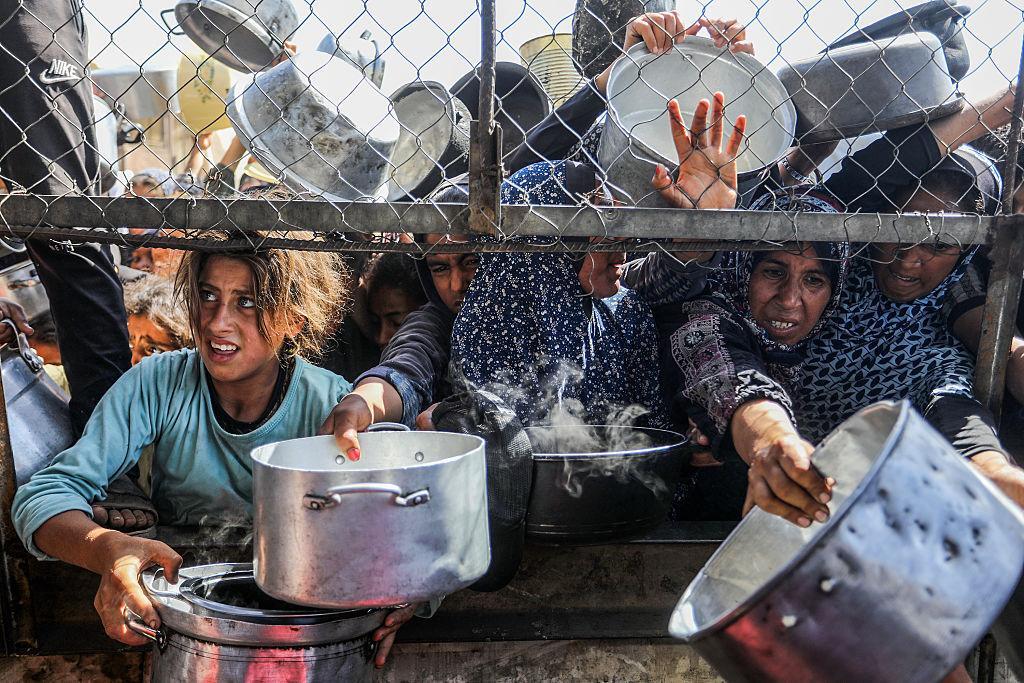
Eid in Gaza: Prayer Amid Ruins, Hunger & Growing Humanitarian Crisis
As the world marked the sacred occasion of Eid al-Adha on June 6, 2025, the Palestinian community in Gaza faced a starkly different reality. The ongoing devastation and humanitarian crisis in the region left many residents struggling to observe the holiday with the usual fanfare. With over 54,000 lives lost and widespread displacement, the usually joyful celebrations were replaced with somber tones of despair and desperation.
In the aftermath of the devastating conflict, many mosques and religious institutions were left in ruins, forcing residents to gather for prayers in open spaces. The once-peaceful streets were now scarred with the remnants of war, and the sounds of gunfire and explosions still echoed in the minds of the people. Amidst this chaos, the community came together to observe the sacred ritual of Eid prayers, a testament to their unwavering faith and resilience.
However, the Eid celebrations were overshadowed by the deepening humanitarian crisis in Gaza. The region was reeling under the weight of food scarcity, with the United Nations warning of impending famine affecting nearly 500,000 people. The UN reported that the Gaza Strip was facing its worst food security crisis in over a decade, with over 70% of the population reliant on international aid to survive.
The situation was exacerbated by the ongoing blockade and trade restrictions imposed by Israel, which severely limited the flow of essential goods, including food and medicine, into the region. The already vulnerable population was pushed to the brink, with many families struggling to access basic necessities like clean water, sanitation, and healthcare.
The Eid celebrations were also marked by a sense of uncertainty and fear, as the people of Gaza continued to live in the shadow of escalating violence. The recent uptick in rocket attacks and airstrikes had left many residents trapped in their homes, unable to venture out for fear of being caught in the crossfire. The constant threat of violence had taken a toll on the mental and emotional well-being of the community, with many people struggling to cope with the trauma and stress of living in a war zone.
In the face of such adversity, the people of Gaza drew strength from their faith and community bonds. Eid celebrations, traditionally a time for feasting and gift-giving, became an opportunity for the community to come together and support one another. Neighbors shared what little they had, offering food and shelter to those in need. The once-joyful atmosphere of Eid was replaced with a more subdued sense of solidarity and determination.
As the community gathered for Eid prayers, they did so with a deep sense of gratitude and humility. They prayed for peace, for an end to the suffering, and for the protection of their families and communities. The prayers were a testament to the enduring spirit of the Palestinian people, who despite facing unimaginable hardships, continued to hold on to their faith and their humanity.
In the midst of the devastation, the Eid celebrations also served as a reminder of the importance of humanitarian aid and international support. The international community had a critical role to play in alleviating the suffering of the people of Gaza, and it was imperative that aid distribution continued uninterrupted.
As the world marks the end of Ramadan and the beginning of Eid al-Adha, it is imperative that we remember the people of Gaza, who are struggling to survive in the face of unimaginable hardship. We must continue to advocate for an end to the blockade and trade restrictions, and for the provision of essential aid and support to the region. The people of Gaza may be facing a grim reality, but their faith and resilience in the face of adversity are a beacon of hope for a brighter future.
Source: https://thecsrjournal.in/eid-al-adha-in-gaza-faith-endures-amid-devastation-and-food-shortages/



